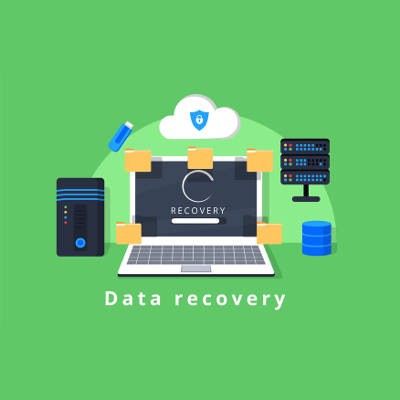Let’s face it; nobody wants to talk about disaster recovery, as even invoking these words makes the possibility a reality. Unfortunately, this is something that has to be discussed, as your business depends on it. This might seem like hyperbole, but if you knew what is at stake, you’d likely agree with us.
Telesys Voice and Data Blog
Technology innovation in the workplace is something that is constantly shifting and changing, depending on what’s hot at any specific time. These days, it might seem like office technology innovation is stagnating, but we assure you that it’s still constantly improving. We’ll walk you through some of our favorites to improve data accessibility and workplace productivity as a whole.
The way that an organization handles risk is a big deal. Despite being born out of opportunity, opening a business itself can be looked on by many a major risk. As a result, every business should be looking to manage their risk. Today, we take a look at the role risk plays in business, and how IT, for all its benefits, carries with it some risk.
When we write about Net Neutrality, we typically write about how it is designed to keep the telecommunications conglomerates, who make Internet service available to individuals on the Internet, honest when laying out their Internet service sales strategy. One way to put it is that without net neutrality in place, the Big Four (which are currently Comcast, Charter, Verizon, and AT&T) have complete control over the amount of Internet their customers can access.
For a moment, I want you to stop and consider something: Who do you turn to when your business’ toilets suddenly stop working? Who do you call for when the lights stop working? Most likely, an expert… so if you turn to the pros for these needs, why would you do anything different for your IT?
It isn’t as though we haven't said this before but leveraging a VoIP (Voice over Internet Protocol) solution over a traditional business telephone system can bring your organization a few very clear benefits. Many of these benefits come from the advanced features that VoIP offers as add-ons. We’ll discuss a few of these features and their advantages.
Businesses deal with compromises every day, whether it’s leaving late to let someone else get an early out or coming in on your day off to get a critical project finished on time. One of the compromises you absolutely don’t want to leave out is your business’ future. It’s up to you to acquire a solution that minimizes downtime without costing your organization an arm and a leg, but this is much easier said than done.
When it comes to innovation, you’d be surprised at what you might be capable of with the right solution. Collaboration in particular opens the floodgates to productivity, and with the right kind of collaborative and innovative technology, you’ll be able to unlock a whole new level of progress for your business. We’ll discuss some of the most important aspects of innovative collaboration and how your business can start taking advantage of it.
Nothing lasts forever; this phrase is true regardless of which industry you’re in or business you run. We all use technology in the office to a certain extent, and the ugly truth is that someday that technology will fail. It’s critical that you monitor technology for warning signs prior to its failure so as to avoid costly repair bills and rushed replacements. You might be surprised by how much you save as a result.
People have come a long way in a very short amount of time. The development of tools designed to make tasks easier have pushed people from hunter/gatherers across the known solar system in the matter of only a few thousand years. One way humans are able to do so much with seemingly so little is though ingenuity, but another is through consolidating management.
There will never be a time that we are not committed to improving the security of businesses. To continue striving for this goal, we’re dedicating this week’s tip to describing some solutions that can assist in locking a business and its data down.
Technology plays an integral part in just about all modern businesses in some way, shape or form. Without a place to purchase devices, however, no one can reap the benefits of them. Some businesses are vendors that provide organizations with these devices. In a sense, they act as the middle man between the producer and the consumer, acquiring devices for sale to businesses and users alike. In this way, vendors are critical for every single business.
When looking to cut costs in the workplace, one of the best places to start looking is at your printing costs. While paper documents were once incredibly important for businesses (they still serve a function), no one can deny that they take up a considerable amount of space in the workplace, as well as take up precious assets that could be better spent elsewhere. What’s the best way to minimize the resources you spend on printing?
The cloud is the perfect outlet for businesses to improve productivity, but the degree to which this statement is true depends on the business and how much it leverages the cloud. If you’re not sure if your business can be utilizing the cloud in a more efficient way, perhaps we can help you make this determination and improve the way you take advantage of this technology.
An engaged employee will be invested in the future of your company, as well as their own future that they can see within your business. Unfortunately, research showcases that the numbers don’t look so bright for employee engagement in the workplace. According to a 2015 poll from Gallup, only about 30% of employees find themselves engaged in the workplace, while about 50% say they aren’t engaged with their work, and 20% claim to be actively disengaged by their workplace.
The funny thing about entrepreneurs is that they have to be very detail-oriented in order to find any modicum of success. This often leads them to inevitably becoming controlling people overall. For years the technology has been present to utilize remote workers, but only recently has the practice become commonplace. This is largely because businesses have begun to seriously consider reducing costs as a strategy to gain profits.
Chances are you have a Google account, whether it’s for business or personal use. It’s more accessible today than ever before and provides a solid way to gain access to several important features and accounts. Considering how much can be done with a Google account, users forget that they can put their security and personal data at risk. Here are some ways that your Google account is at risk, as well as what you can do to fix it.
The funny thing about some documents is how the data written on them can strongly influence how important they are. If, for instance, there were two pieces of paper on a table, there is objectively no difference between the two, and so they are objectively equivalent in value.
Few technological assets are as important in today’s business world as a working telephone solution of some sort. While its form has changed considerably over the years from a traditional handset terminal to a desktop application or mobile device, its functionality remains largely the same. In some ways, it’s even better and more improved, offering unprecedented opportunities for businesses to revamp their entire communications infrastructure.
If your business uses technology to be more productive and efficient, you know that as soon as you buy a piece of new technology, there is another one right behind it that has more power, or better features. This is true for consumers as well. This constant innovation is what has made technology a viable option for many small businesses. After all, if computers hadn’t been innovated on constantly, they’d still be the size of a room (or wouldn’t exist at all).
Mobile? Grab this Article!
Tag Cloud




















